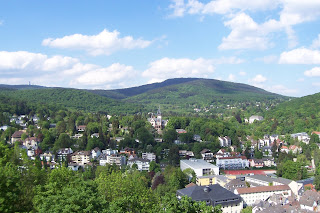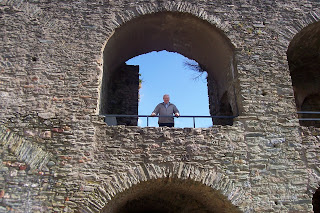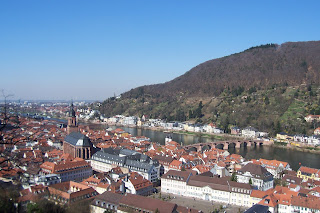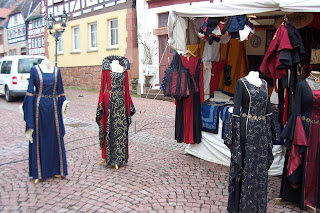April 30, 2011
Once in a while we are able to meet with several senior missionaries that are serving various callings in the Area Office.
We attended a barbeque and ate real American barbeque food--it was yummy.
 This picture was taken of Don and I in the annex to the temple.
This picture was taken of Don and I in the annex to the temple.
Lest anyone forgets the real reason that we are in Germany, we are including a picture of the temple.
We work in the temple five days a week; one week the early shift which starts at 6:30 am and goes until 1:30 pm, the next week we work the late shift which starts at 1:00 pm and goes until 7:00 pm, except on Fridays and then it goes until about 10:00. We meet many people from many different countries. Some of the countries that people come to the temple regularly from are: Crotia, Serbia, Albania, France, Holland, Germany, America (lots of visitors) Italy, Slovania, some Russians, Austria, and the Czech Republic. Makes for interesting conversations in all kinds of languages. It is challenging, but we love it.

This is where we live. There are five apartments in this building--it is called The Villa.
It is located right on the temple grounds. We moved here in January.
Our apartment is located on the ground floor (just behind the flowering trees in the picture).
The two counselors and their wives have apartments on the top floor, the Temple President and his wife's apartment is on the second floor, and our and one other apartment is on the ground floor.

May 2, 2011
Konigstein
We visited a little town not far from Frankfurt. Konigstein is a small picturesque town with two castles in it.



 This is the city wall. We couldn't decide what the hole was for--someone suggested that it was for guns (when the city needed defending)--Karen thought it looks like a giant key hole. There were two of these several feet apart.
This is the city wall. We couldn't decide what the hole was for--someone suggested that it was for guns (when the city needed defending)--Karen thought it looks like a giant key hole. There were two of these several feet apart.
 In the background is one of the castles. This is one of the more modern castles in Germany. It was built as a Chateau for the Frankfurt banker Albert Andrease in 1891. In 1957 it was used as a boarding school until it becamse private property in 1987. Since 1997 this building serves as a company headquarters.
In the background is one of the castles. This is one of the more modern castles in Germany. It was built as a Chateau for the Frankfurt banker Albert Andrease in 1891. In 1957 it was used as a boarding school until it becamse private property in 1987. Since 1997 this building serves as a company headquarters.
Don wants Bergen (Melinda's daughter) to know that we found her boots that she left when she visited Germany a couple of years ago--they are hanging on the side of a wall in Konigstein.
Actually, I don't think that Bergen left her boots here--but maybe......... The Fortress of Konigsten
The Fortress of Konigsten
 The Fortress of Konigsten
The Fortress of KonigstenThe founding of the castle and city is based on a legend told in which the Franconian king Chlodwig (who governed 481-511) supposedly built the castle on the hill. The first mention of Konigstein in the historical records datges back to the year 1215--so it is assumed that the castle/fortress was built sometime around then.

Looking out into the park that surround the castle



The castle served both as a national fortress and as a state prison. At the end of the 18th century followers of the French revolution were also keep in custody there. In 1792 a large part of the city burned down, when the fortification was bombarded and then again the castle was dynamited by French troops in 1796. All that remains of the castle is ruins.

Looking out into the park that surround the castle



The castle served both as a national fortress and as a state prison. At the end of the 18th century followers of the French revolution were also keep in custody there. In 1792 a large part of the city burned down, when the fortification was bombarded and then again the castle was dynamited by French troops in 1796. All that remains of the castle is ruins.



























































